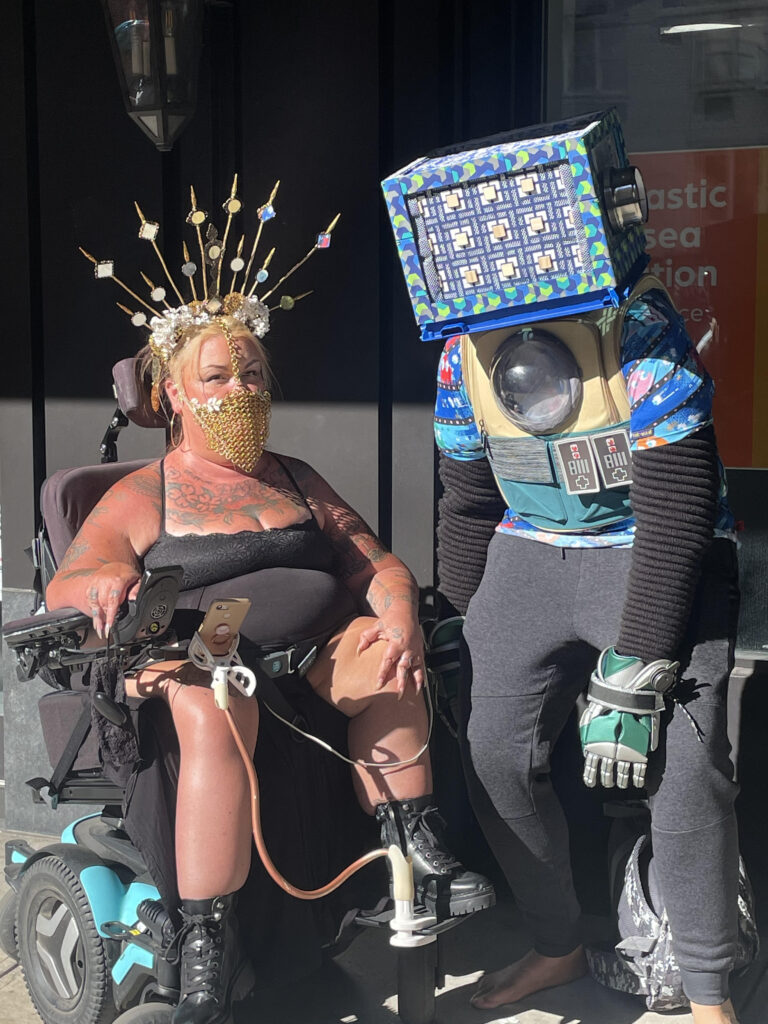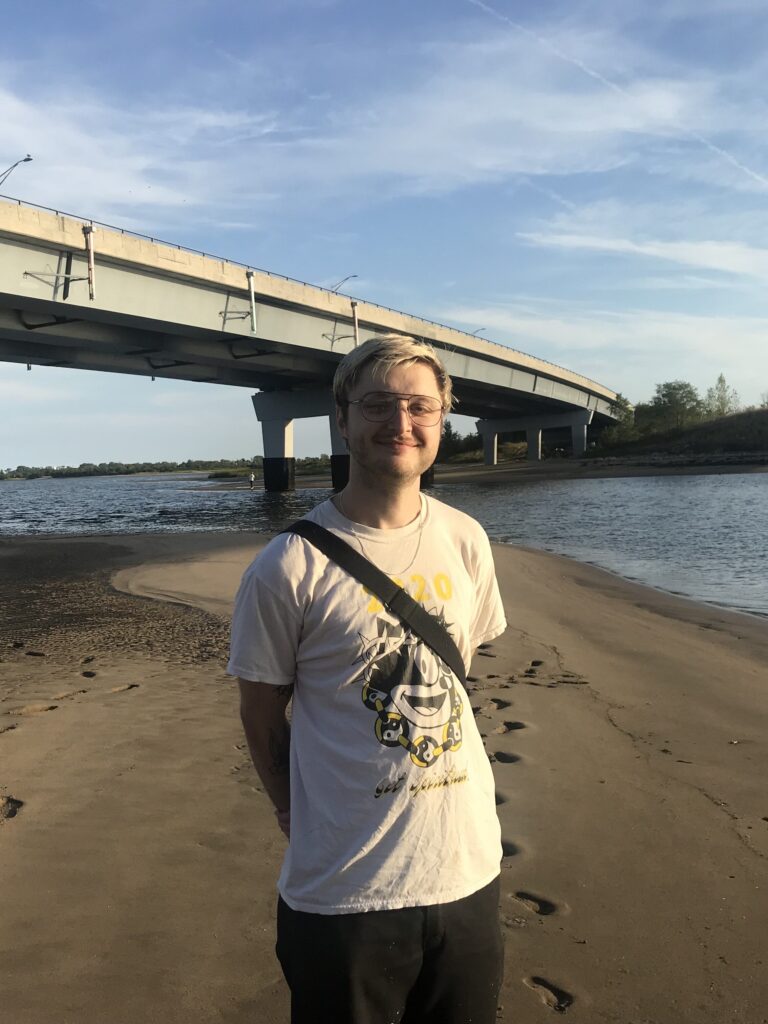Street / Art, 14th Street: the good people of AiOP stories 2022
By Rich Garr

(Photo by Rich Garr)
“New Yorkers laugh at good people and mock their life” was an odd first message to see as I climbed out of the subway (can you see it above?). This is less than a mile from the chaos of the Twin Towers, where 21 years ago hundreds of cops and firemen ran towards the carnage of the Twin Towers to help fellow New Yorkers. Those brave New Yorkers never came back. And this town would never be the same.
In the dark hours and days that followed, New Yorkers came together like never before. But dark elements bullied their way into The City. We don’t need one of my favorite NYC artists, Laurie Anderson, to tell us about the complexity and dark wonder of this attack and aftermath, but the vibe is captured beautifully in her piece “From the Air” (which I just rewatched in her big show The Weather at the Hirshhorn Museum in D.C.). The New York version of the Art in Odd Places festival in some ways grew out of the 9/11 disaster, when American leaders tag-teamed civil liberties and public space in a scramble to root out nebulous evil. If the friendly blue skies were a battleground, now the streets would be as well.
Of course, the streets of Manhattan have always been contested. They’ve been filled with blood and tears for centuries, but on most days subtleties rule. And those subtleties were in full force during this last Art in Odd Places (AiOP) festival. Even more than usual there was a cornucopia of expression.
Some messages were- and are- ridiculous. They’re meant to catch the eye: distract, remind, persuade… grab attention by all means possible. How do the AiOP artists stand out? Or do they blend in? Maybe that depends on what story you’re telling. Below I mention a few of these projects, and sprinkle in mentions of other art on the street… the stuff you find there every day.
Curator Jessica Elaine Blinkhorn and her crew- with guidance from rookie festival Director Furusho von Puttkammer- clearly didn’t want to tell one kind of story this year. They did a great job collecting a variety of Stories. There were over 40 artists from the Disabled, Incarcerated, Elder, BIPOC, LGBTQ+ and Allied communities. Projects took many forms. In some cases, artists used their platform to tell the story of other voices traditionally shunned. And not just the AiOP artists! Here on 14th Street- on AiOP weekend- fresh voices were apparent and noticeably appreciated. The best art was focused on blending a unique voice with the time-tested cacophony of Lower Manhattan.
One of the clearest examples of this site-specific melding was Christopher Kaczmarek’s “Carry On: The Labor of our Burdens” piece. Like a handsome talking snail, Kaczmarek hauled a funky structure across the landscape. Not to compete with the beauty of a snail shell, his structure was a generic gray 4-story building. And unlike snails, communication was inviting and purposefully two-way. Instead of marking his path with silver snot, interactions were documented by chalk that was deftly attached to his walking stick. By late Sunday you could see remnants of positive interactions (hearts) and directional arrows on pavement spanning The City’s two great rivers. I had a nice chat with Kaczmarek and a seemingly homeless man on one street corner. We both appreciated his luggage, and agreed that it looked a bit like the Met Life Tower rising up behind our conversation.

(Photo by Rich Garr)
Unfortunately homelessness is an obvious issue that comes to mind along 14th Street even without an artist hauling a home on his back. An anonymous writer / artist assures that pedestrians cannot ignore this issue. Scrawled on one sidewalk spot: “Homelessness: Man’s Inhumanity to Man.” Another note a block away is pictured below.

(Photo by Rich Garr)
Words are important, and so are numbers… especially statistics coming from credible sources like our city government’s own website. According to them, we have just broken the modern record for adults living in NYC shelters: 41,923. Just as street artists, graffiti writers, and fine artists vie for space on our streets; there is tension between new and old homeless New Yorkers. The recent influx of migrants from southern states presses this issue, and we can only hope city leaders respond.
One thing that the street provides is real time, real life conversation. Most would agree that fine art plays an important role in civilized society. But what about the ephemeral stuff out in the streets? This is certainly central in performance art, and one AiOP artist really underscored this with writing that literally evaporated from the sidewalk: Tamara Wyndham. Lines in a kind of poem about temperality we painted in water. Her statement said, “No trace of the performance is left once the words evaporate,” but I captured this (below) photo. And I read the words “All that we have created will decay” just before they disappeared. The medium is the message, and it’s gone. Perfect.

(Photo by Rich Garr)
With the emphasis on the present, I soldiered on to see a few more artists. I’ll briefly note the ones who made strong impressions and still have me thinking:
- Ana De Orbegoso, a Peruvian/American NYC-based artist with a rack of beautifully embroidered, eclectically designed vests, was hard to miss on the sidewalk. I happened upon another fellow AiOP “thinker” Harley Spiller, and we tried on Ana’s wares. Each one held significant weight, and reminded me of bulletproof vests. Powerful… to match the short potent messages. Photography and social media played a part here, too. It spreads the empowerment vibe to those not physically present. And documentation reminds people that everyone has a part to play in defending recent unprecedented attacks on women (both in the courts and home). I chose my vest upon her recommendation. I believe Harley chose his to match his shirt and bowtie, but they were all intensely relevant. They were also bilingual, and reminded me right away of the activist street work of artist Tatyana Fazlalizadeh.

(Photo by Rich Garr)
- Vivek Sebnastian’s sidewalk “studio” (pictured below) cranked out a beautifully explained Indian / Tarot style lucky charm for me to hang in my new art studio. It was made out of an old NY lotto scratch-off, packaging tape, super glue, and specific customized traditional materials. This project (and the next I mention) are akin to SeeMeTellMe, or Billy Barnacles: 2 local street artists that leave small art gifts for “collectors” who are on their toes and attentive in the streets. Vivek and I chatted about our shared interest in graffiti and street art, and experiences navigating Brooklyn studios. We look forward to keeping an eye on each other’s art, and I’m grateful for my new talisman, but also for accompanying tidbits on Hindu gods and tradition. I recently happened to have Hanuman- and the Hindu epic Ramayana in general- recommended to me by a friend. This tells me that Sebastian got me, and is a genuine listener. He seemed pleasantly comfortable sitting on that sidewalk, and his energy was contagious.
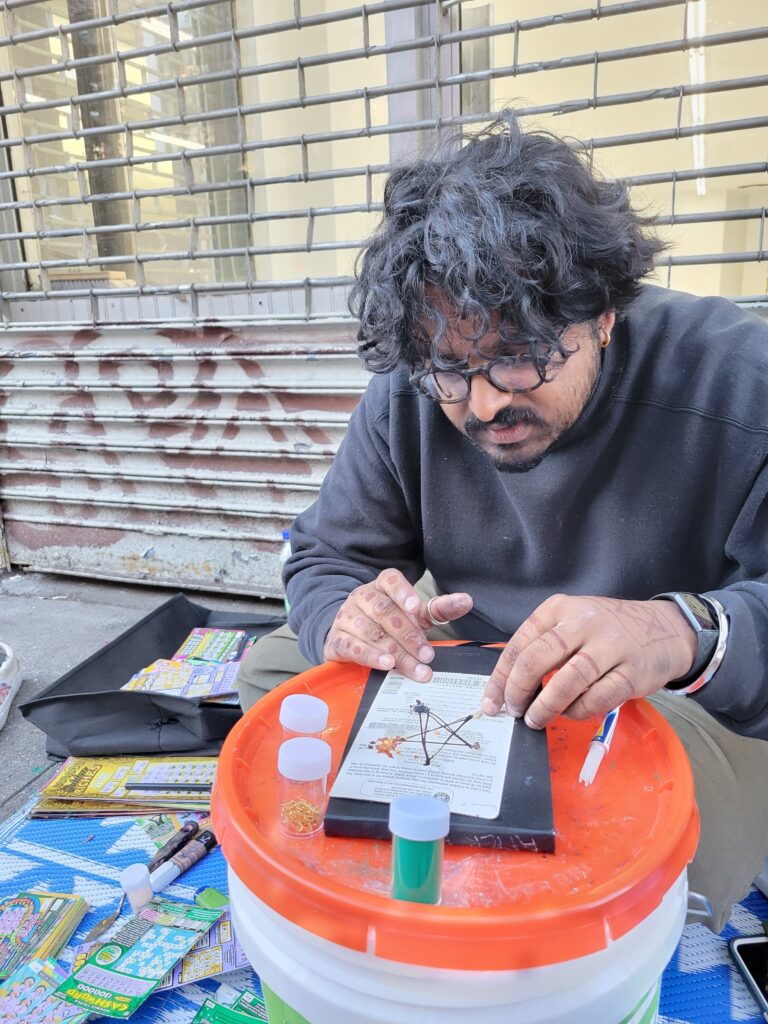
(Photo by Rich Garr)
- I witnessed Suzanne Joy Clark amidst a lively street dialogue. Similar to Vivek, she gave away a small gift. This one, a neatly wrapped question in a box. I spoke to her at the Intro to the Festival on Friday night, and appreciated her project’s emphasis on question rather than answer. I would have loved one, but didn’t have the time that day. In any case, it was apparent that her roving, warm line of questioning was a hit.
- Nick Daniels is another artist I met at the Friday “What’s Your Story” intro event. He was in town from Pittsburgh, and coming off of an afternoon of “moving the High Line” on the western edge of 14th Street. I missed this performance, but gathered from his story Friday night that it was a Sisyphean, rugged performance. Like Kaczmarek’s, he carried a heavy burden- though Daniels’ seemed impossible. The performance I did witness on Saturday had him tangled in ropes on a fence near a few other artists in the thick of the Festival’s “Critical Mass” between Sixth and Eighth Avenues and 3 & 5pm (a handy new feature of this year’s festival). Nick writhed and wrestled the ropes. Passers-by slowed, and some stopped. A purposefully stuttered refrain of: “It all started as we were bought here as slaves from Africa!” bellowed above the clanging fence and car horns. Once he broke from the chant to urge someone to stay for more. I did, at least… and it became hypnotizing. For one empathetic moment in the middle of downtown Manhattan I saw centuries of burden. Many passed by and ignored it. A few folks tried to chat with Nick, but the actor kept in character. He sprinkled in the phrase, “the land of the free and the home of the brave” to hammer home the extent of the black struggle throughout American mythology. He was a Dancer Against Normal Action. Appropriately, the dance company he founded way back in 1991, D.A.N.A. Movement Ensemble takes that name.

(Photo by Rich Garr)
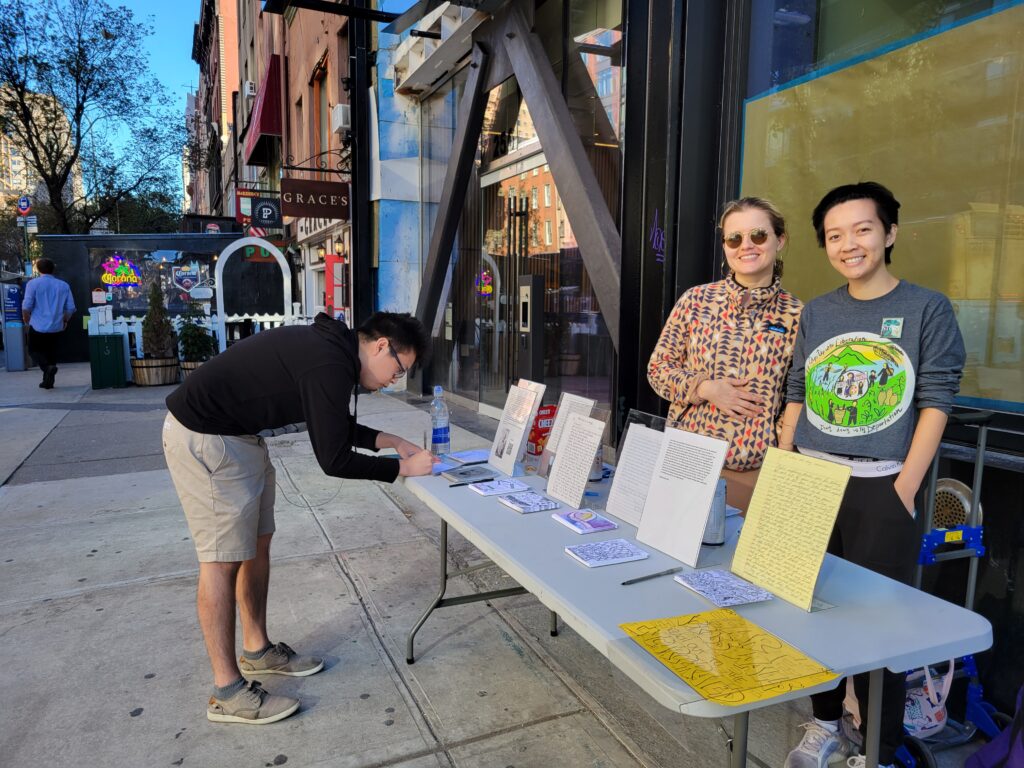
(Photo by Rich Garr)
- Juan Hernadez and other incarcerated artists showed work via postcard. Mai Tran and a friend worked a table to tell about the artists- all of whom are stuck in Illinois’s Dixon Correctional Center. Seven different artists had cards. I took one of each, and have already mailed and received an enthusiastic snail-mail response from Martin Barrientos– whose card reminded me of artist Mr. Cartoon. I hope to write some of the other postcards soon. As I expected, Martin described in his response letter, “no support makes time slow,” and the action of festival attendees writing a quick hello seems to go a LONG way. I see mass incarceration, housing, and [lack of] education as part of one neglected societal problem. So this project- and the real action it summons- is extremely powerful and appreciated, with tangible lasting effects. No art school BS here.
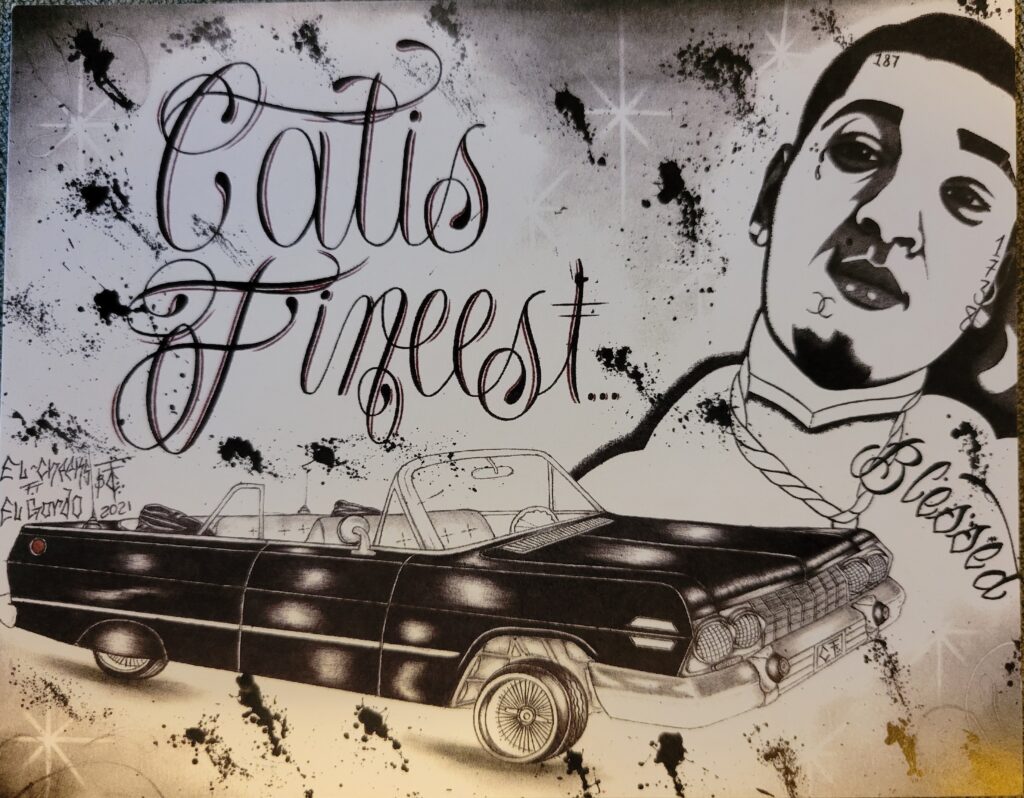
(Photo by Rich Garr)
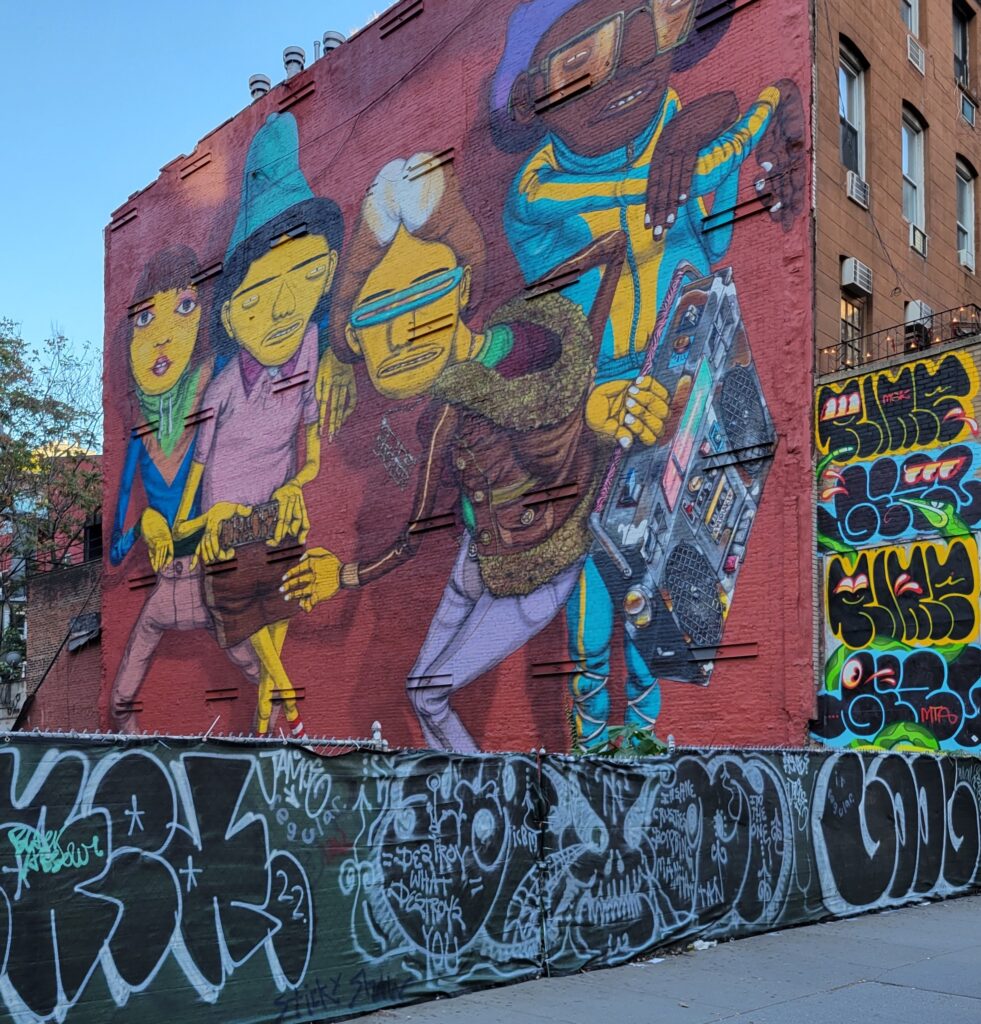
(Martin Barrientos postcard, 1 of 7 chosen to mail from the project “Art Across Walls” by Juan Hernandez & Mai Tran. Photo by Rich Garr)
(Os Gemeos– Two legends of the street art world painted a tribute to a culture of the streets- Hip Hop- that grew up right here in these NYC streets. And this is only one of the walls. You should see the matching one across the vacant lot. Photo by Rich Garr)

(Very cool to have an old Kenny Scharf monster on your lobby wall, LGBTQIA+ Center! The Bureau of General Services: Queer Division is a bookstore on the 2nd floor of this 208 W 13th Street address. They graciously hosted Friday’s event. They also host high quality art exhibits, and are open to visitors Wednesdays-Sundays, 1-7pm. Photo by Rich Garr)
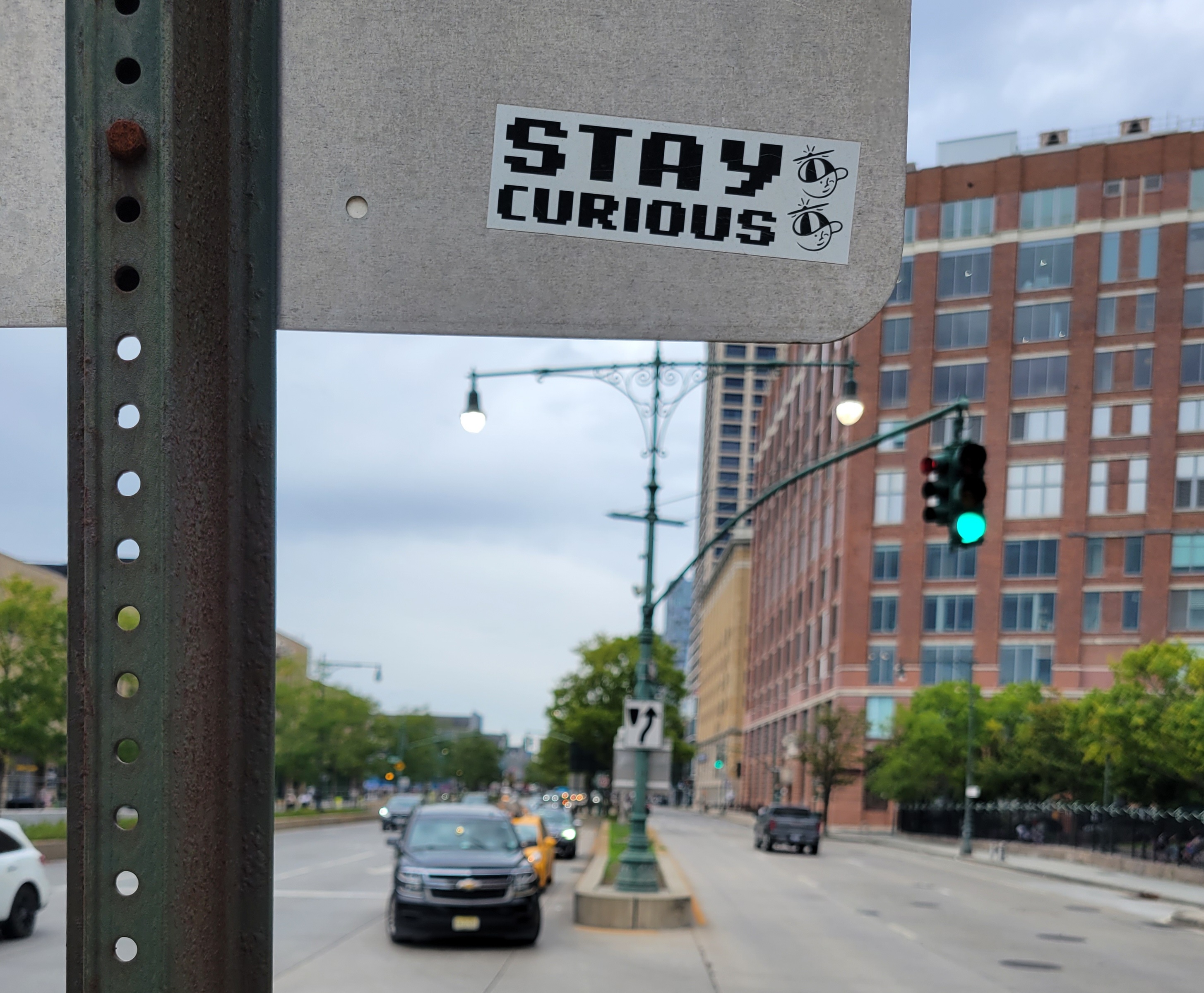
(Anonymous slaptag, West Side Highway & 14th Street. Photo by Rich Garr)
Legends of every kind know this street. And regular people, too, whose stories may not be as good. But those regular folks may just be as important. About 100,000 of them probably walk on 14th Street every day. As this year’s “Stories” emphasized, everybody has a voice, and it might not even be audible. Do you know John Cage’s famed piece “four thirty-three”? Look it up. It’s no surprise Cage lived right around here, and enjoyed watching and listening to his city streets. In fact, Laurie Anderson recalled once asking Cage where she should sit to enjoy the action on the street. Cage replied, “everywhere is the best seat.” Maybe especially on AiOP weekend, but everyday there’s good seats on this street. Stay curious, and keep an eye on the streets!

(As DJ / street artist Royce Bannon warns us in this 14th Street doorway: “Streets is Watching”. Can you see it? Are you watching yet? Photo by Rich Garr)
Rich Garr is an interdisciplinary collage artist highlighting history and community through traditional 2D collage, walking tours, and wheat pasted paper memorial plaques. His favorite “found materials” are people, so community engagement is both practice and product. The rhythm and dialogue of city streets is also a usual suspect in his art, often amidst the border of the built and natural environment. Unscripted, interactive tours are “Gotham SideWalks,” and occasionally feature his Street Art History Plaques. They consistently take the form of monthly public walks around Brooklyn’s Gowanus Canal, but have appeared all over NYC over the past dozen years.










